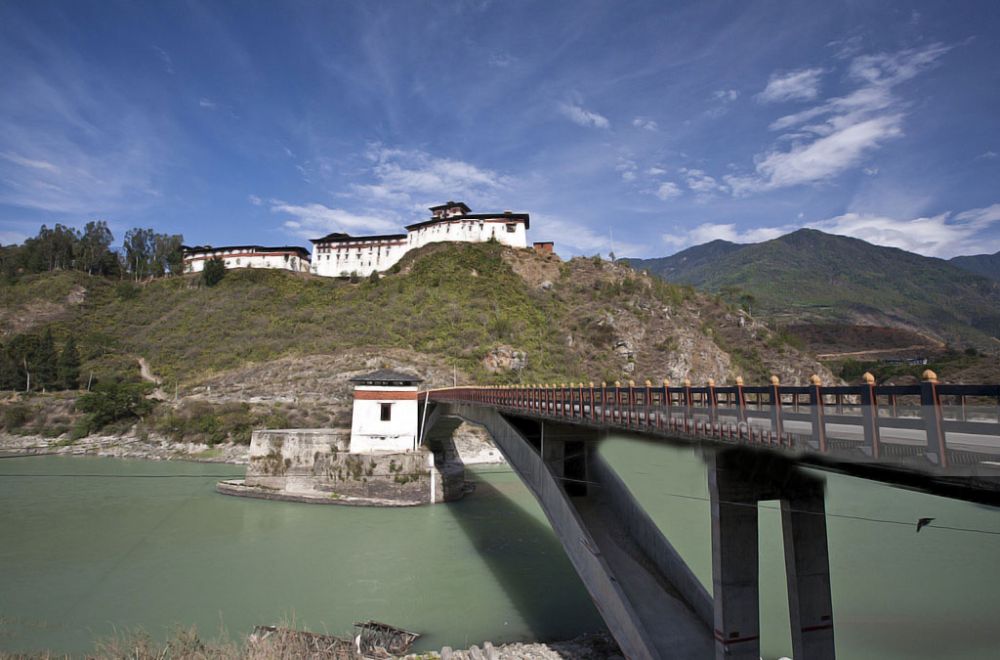

Nestled in the Himalayan kingdom of Bhutan, Wangdue Dzong is a fortress that holds great historical and cultural significance. Wangdue Dzong, also known as Wangduephodrang Dzong, was founded in the early 17th century by Zhabdrung Ngawang Namgyal, the unifier of Bhutan. It has served not only as a religious and administrative center but also as a symbol of the architectural genius and traditions that are unique to Bhutanese culture.
The dzong, perched on a strategic ridge at the confluence of the Punakha Chu and Tang Chu rivers, overlooks the town of Wangdue Phodrang. For centuries, it played a crucial role in protecting the region from invasions and in administering the district. Unfortunately, in 2012, a tragic fire caused extensive damage to the structure. Since then, significant efforts have been undertaken to restore the dzong to its former glory, preserving the intricate woodwork and sacred murals that adorn its walls.
Tourism in Bhutan was officially initiated in 1974 when the Government of Bhutan, in an effort to raise revenue and to promote Bhutanese unique culture and traditions to the outside world, opened its isolationist doors to foreigners. Since then, the concept of 'High Value, Low Impact' tourism has guided the industry, ensuring that the influx of tourists does not compromise the nation’s cultural values or the environment.
Bhutan is often considered a model for responsible tourism, with its strict policies on tourist numbers and a mandatory daily tariff that covers accommodation, food, transport, and guides. All tourists (except citizens of India, Bangladesh, and the Maldives) must have their tours arranged through a Bhutanese tour operator or one of their international partners. The tariff system contributes to sustainable development and provides a unique and high-quality experience for visitors.
In recent years, Bhutan has seen a shift in tourism trends mandating the need for more sustainable and immersive travel experiences. Community-based tourism initiatives have gained momentum, allowing travelers to live with Bhutanese families, learn about local customs, and take part in everyday life. This not only provides tourists with an authentic encounter but also helps to distribute the benefits of tourism more widely amongst the population.
Wellness and spirituality are also growing facets of Bhutan's tourism industry, with the country's serene environment and Buddhist heritage paving the way for retreats that offer meditation, yoga, and holistic healing. Additionally, adventure tourism is burgeoning, with opportunities to trek through the Himalayas, mountain biking, and river rafting. Nevertheless, these activities are carefully regulated to maintain both traveler safety and environmental integrity.
The concept of ‘Carbon Negative Tourism’ is also taking center stage, emphasizing the fact that Bhutan is the world's only carbon-negative country. Tourists are drawn to this green destination, further motivated by the opportunity to contribute to the conservation efforts across the nation’s extensive network of protected areas.
Despite the evolving dynamics of tourism, Bhutan continues to protect and celebrate its cultural heritage, exemplified by monuments such as the Wangdue Dzong. As restoration projects complete and the fortress returns to its majestic form, it will undoubtedly reclaim its position as a highlight for those who venture into this land of the Thunder Dragon.
Bhutan's commitment to sustainable tourism, paired with the allure of its ancient fortresses like Wangdue Dzong, ensures that its tourism sector will remain resilient, authentic, and deeply rooted in the ethos of this unique Himalayan kingdom.